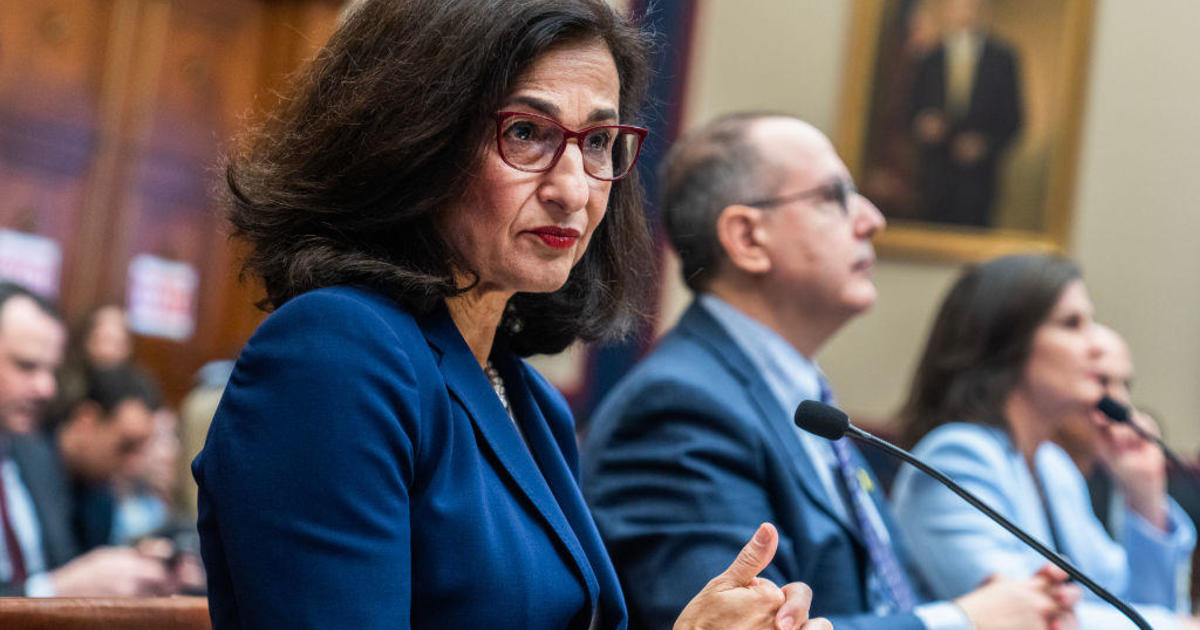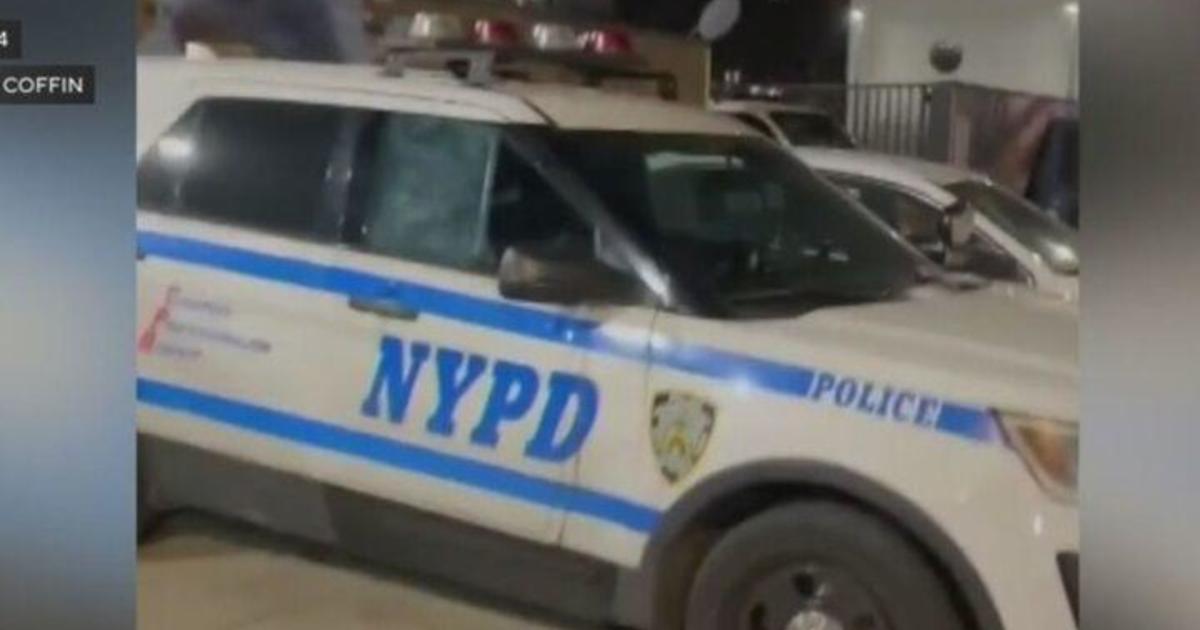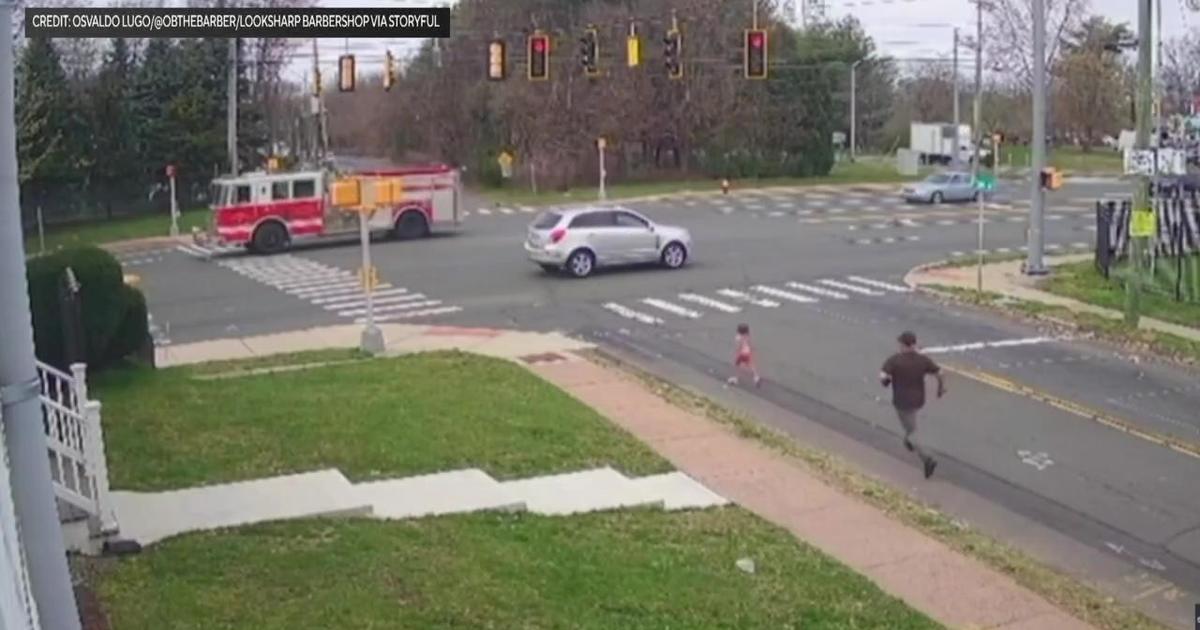NTSB: Distracted Engineer To Blame For Deadly Amtrak Derailment
WASHINGTON (CBSNewYork/AP) -- The speeding Amtrak train that crashed in Philadelphia last year, killing eight people, most likely ran off the rails because the engineer was distracted by word of a nearby commuter train getting hit by a rock, federal investigators concluded Tuesday.
The National Transportation Safety Board also put some of the blame on the railroad industry's decades-long delay in installing Positive Train Control, equipment that can automatically slow trains that are going over the speed limit.
Engineer Brandon Bostian was apparently so focused on the rock-throwing incident he heard about over the radio that he lost track of where he was and accelerated to 106 mph as his train went into a sharp curve with a 50 mph speed limit, investigators said at an NTSB hearing convened to pinpoint the cause of the May 12, 2015, tragedy.
"He went, in a matter of seconds, from distraction to disaster,'' NTSB board member Robert Sumwalt said.
PHOTOS: Amtrak Train Derails In Philadelphia
Bostian told investigators after the wreck that he remembered radio traffic from a Southeastern Pennsylvania Transportation Authority train operator who said a rock had shattered his windshield. He was monitoring the radio traffic until about a minute before his Amtrak train reached 106 mph, said Steve Jenner, another NTSB investigator.
"The Amtrak train passed the disabled SEPTA train operating at or near track speed," Jenner said. "After he passed the train, the Amtrak engineer continued to pay attention to the radio communications between a SEPTA engineer and the dispatcher that lasted for a few minutes."
The engineer's full-throttle acceleration would have made sense for someone who thought he had already passed the curve, Jenner said. After the curve, the tracks open up into a straightaway with a speed limit of 110 mph.
"With his attention diverted to the SEPTA train, the Amtrak engineer may have lost situational awareness," Jenner said.
Bostian, who has been suspended without pay since the crash for speeding, did not attend the hearing. His attorney didn't return an email sent Monday seeking comment.
Bostian had told investigators that he didn't recall what happened between pushing the throttle to pick up speed and then braking when he felt the train going too fast into the curve.
A blow to the head suffered during the wreck probably prevented him remembering what happened, NTSB medical officer Mary Pat McKay. She said he was thrown around the cab of his locomotive when it overturned.
Early in the investigation, the NTSB focused on whether the Amtrak train had been hit with a rock or other projectile minutes before the crash.
Investigators confirmed Tuesday that it was not, but said the consequences of that incident "influenced" Bostian, NTSB Chairman Christopher Hart said.
Bostian told investigators that he was concerned about the welfare of the commuter train's engineer and "a little bit concerned'' for his own safety, but he never indicated in either NTSB interview that his train had been struck, too.
But had Positive Train Control been in use along the stretch of track, "we would not be here today,'' said Ted Turpin, an NTSB investigator. Such equipment is now in place there and along much of the rest of the Northeast Corridor.
Hart said the backup safety system would have provided a "technological safety net for inevitable human error.''
"It is a world in which the engineer relies in part on the memorized details of the route and a world in which a loss of awareness can take a terrible toll,'' Hart said in his opening remarks.
The train from Washington D.C. to New York's Penn Station was traveling more than twice the speed limit when it took the curve, sending all seven train cars and the engine off the tracks.
The southbound stretch of track near the accident site had an earlier-generation type of automated control for slowing trains. But the northbound stretch, where the wreck occurred, did not. The more-advanced PTC had been installed on that section but was still being tested when the crash happened.
The investigation also found that after the derailment, the train's emergency windows dislodged as the train cars slid on their sides, killing four people who were ejected, according to NTSB investigator Dana Sanzo.
Among other things, the NTSB recommended research into seat belts in railcars and ways to secure luggage that can become missiles in a derailment; training for railroad crew members on multitasking; and the use of new equipment and procedures to help crew members keep track of their location in spots where PTC is not in place.
In a statement, Amtrak said it has "taken full responsibility for and deeply regrets the tragic derailment'' and will carefully review the NTSB findings and recommendations and quickly adopt them where appropriate.
The railroad noted that PTC is already in place on most of Amtrak's portion of the Northeast Corridor and that it has also installed inward-facing video cameras on locomotives.
In addition, the investigation found that police transported many of the injured people to the hospital instead of waiting for ambulances. Pat McKay with the NTSB said just 23 of the 185 survivors hospitalized in the crash were taken in an ambulance.
The rest were taken by other means, such as city buses, police cars, vans and paddy wagons. That includes at least 28 of the 43 people with serious injuries. In all, 24 people were transported by ambulance. One died at the hospital.
Philadelphia's police and fire departments don't have the same dispatch system. Medical research shows similar outcomes between patients taken to the hospital by police vehicles and by ambulances.
The city's office of emergency management is finalizing a revised mass-casualty plan that will continue to allow police to transport victims but will aim for better coordination with the fire department, said spokeswoman Noelle Foizen.
Bostian, regarded by friends for his safety-mindedness and love of railroading, apparently commented in an online forum for train enthusiasts on a range of industry issues, including safety.
Some of the posts lamented that railroads hadn't been fast enough to adopt positive train control. The person behind the username signed a few of the posts "Brandon Bostian'' or simply "Brandon,'' though they were never definitively linked to him.
A letter from Amtrak in the NTSB files shows the engineer was suspended for speeding.
(TM and © Copyright 2016 CBS Radio Inc. and its relevant subsidiaries. CBS RADIO and EYE Logo TM and Copyright 2016 CBS Broadcasting Inc. Used under license. All Rights Reserved. This material may not be published, broadcast, rewritten, or redistributed. The Associated Press contributed to this report.)



